Steam Locomotives Classes
On this pageNote: This page is not meant to be a comprehensive list of features or history of steam locomotive classes. Classes have been selected for railfan and/or technical interest. Detailed information on dimensions and operating figures, makers' lists, lines worked, etc., can be found in standard reference works on this topic such as the Hugh Hughes books (see the bibliography section).
Steam Locomotives
These early classes were BESA designs from 1903-1910, used in many areas, but performed poorly because they were British designs not well-adapted to Indian conditions. They had narrow grates and fireboxes meant for high-grade coal, inside cylinders, and other such typical British features of the period. The SG was a 0-6-0, the HP was a 4-6-0 and the HG was 2-8-0.
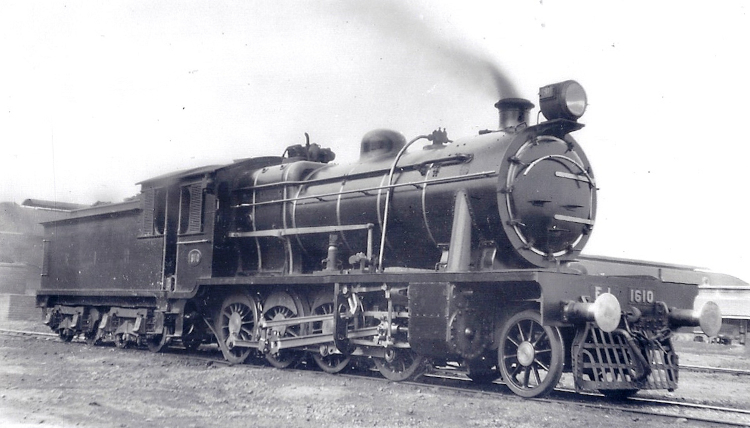
Superheated versions of these designs were classified as SGS, HPS and HGS. Some locomotives were also converted from saturated to superheated to better perform in Indian conditions. These were classified SGC, HPC and HGC.
These were the smallest and lightest locomotives of IRS design for broad gauge. Used mainly for branch line light traffic. 4-6-2 arrangement. 13t axle load. 180 psi boiler pressure with two outside cylinders.

113 were built by Vulcan Foundry between 1929 and 1935.
Light passenger, 4-6-2, BG, with an axle load of 17 tons. 180 psi boiler pressure with 2 outside cylinders. 99 were built, mostly by Vulcan Foundry, with North British and Armstrong Whitworth making a few.
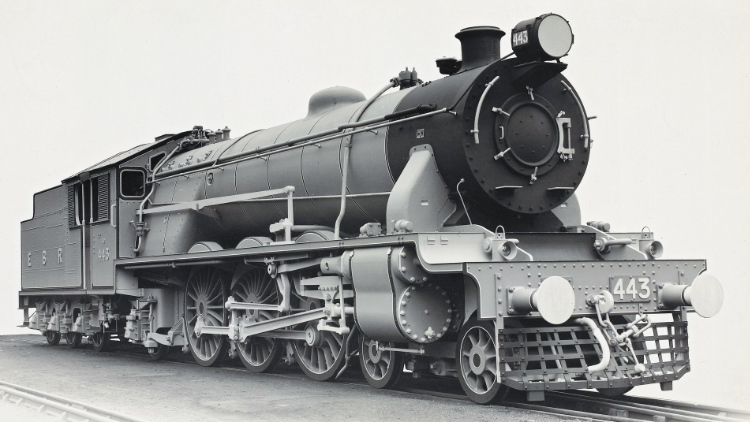
This class had problems with stability and sideways oscillation, which led to the Bihta accident (see below) where over a hundred lives were lost when a passenger train derailed at speed.
No locos of this class have been preserved in India. In Pakistan, an ex-EBR XB class loco, #450, was known to be in good condition at Moghulpura Works, Lahore, in 1994. It was the only one sent to the then West Pakistan from the then East Pakistan (Bangladesh today).
Heavy-duty 4-6-2 BG passenger loco. A larger version of the XB design, with an axle load of 19.5 tons. Two outside cylinders (23 in × 28 in). 72 were built in total by Vulcan Foundry and William Beardmore & Co between 1928 and 1931. They were known as the “big brother” of The Flying Scotsman. Generally disliked by the crew because of instability at higher speeds.

The photographer Colin Garratt recounts an attempt to hide one of the last of these locos that was intended for the scrapyard at the Bardhaman shed with the help of the shed foreman. The loco, however, was discovered and scrapped. The last XC was also extensively photographed by Garratt in repainted colours standing in for The Flying Scotsman.
"X Dominion" loco for light freight, 2-8-2, BG. This was widely used for freight duties, with nearly 200 built in all (a second batch was built in the 1940's). Axle load of 17 tons.
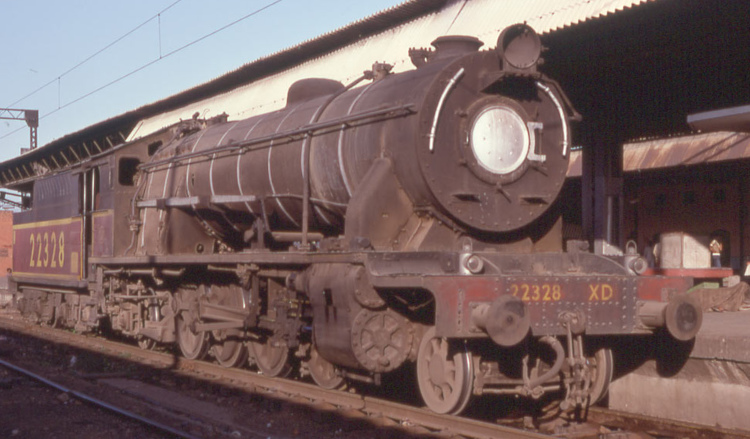
Variants
AWD: Similar design made by Baldwin Locomotive Works in the World War II period.
CWD: Similar design made by the Canadian Locomotive Company and the Montreal Loco Works. Along with AWD, the largest imported class, numerically.
"X Eagle" loco for heavy freight, 2-8-2, BG. These were the most powerful of the IRS designs. 22.3t axle load. These locos were huge: 7' diameter boiler with 210 psi of pressure. Two cylinders, outside.
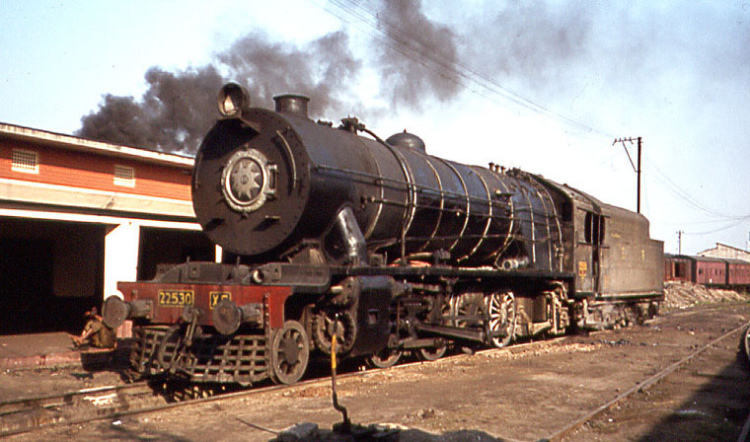
Built between 1928 and 1930 by William Beardmore & Co and Vulcan Foundry. XE 3634 (22541) has been restored and is currently homed at Rewari Steam Shed.
Variants
AWE: Made by Baldwin Locomotive Works during and post World War II period when British manufacturers could not meet demand.
Light Tank, 0-4-2T, BG, Caprotti valvegear. Used for light passenger duties. In the '40s Ajmer workshops began producing this class of loco.
Experimental class built by Vulcan Foundry for GIPR in 1937. Only two were made. The aim was to gain the power of the XC within the operating area of the XB and to achieve running mileages of 200,000 between overhauls, and a monthly average of 10,000 miles. These were very high figures for the time. The boiler and firebox of the XB were taken as the basis, although details were modified, and the wheels and cylinders were of the same dimensions. Boiler pressure was higher at 210lb, and the tractive effort of 31,200lb was greater than that of both the XB (26,760lb) and the XC (30,625lb).
Both locomotives were fitted with Caprotti valve gear, and both had roller bearings on all engine and tender wheels; one Timken (3100) and one Skefco (3101). They weighed 99 tons, with an axle load of 18-2/3 tons, and a grate area of 45 sq ft.
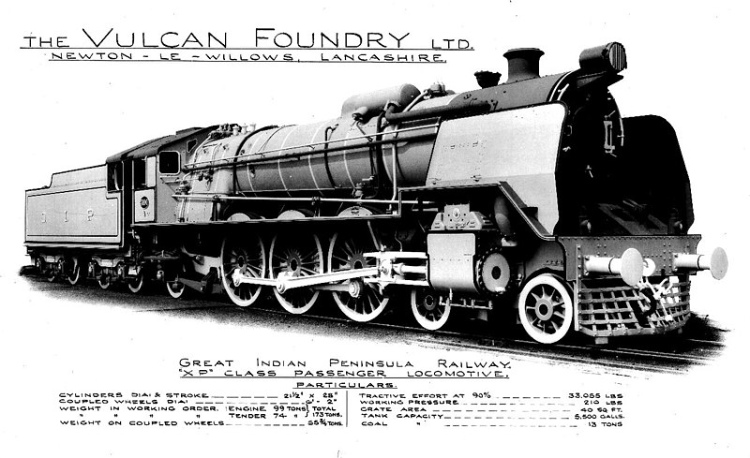
The XP class was the basis for the post-war WP class. The two locos carried GIPR running numbers 3100 and 3101, and on CR the all-India numbers were 22599 and 22600.
A 4-6-2 Pacific class introduced after World War II for passenger duties, marking the change from 'X' to 'W' for broad gauge locos. It was capable of doing up to 110km/h and remained IR's crack locomotive for many years. WP's were designed specifically for low-calorie, high-ash Indian coal, by Railway Board designers in India.
18.5t axle load; 5' 11" boiler with 210 psi pressure; 30,600lb of tractive effort.
Several WP's remained in service until the '80s. Easily recognized by the cone-shaped bulging nose with (usually) a silver star device painted on it.
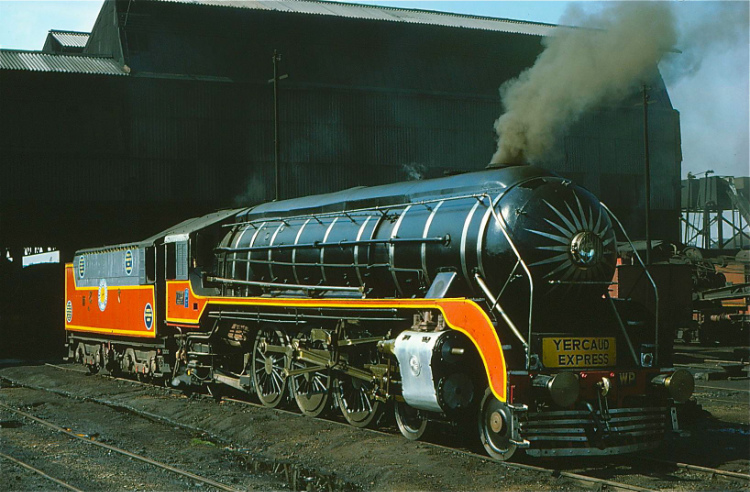
In total 755 were built between 1947 and 1967. Baldwin Locomotive Works, Montreal Locomotive Works, Canadian Locomotive Company, Fablok of Poland, Lokomotivfabrik Floridsdorf and CLW were the builders. Early prototypes from Baldwin were labelled WP/P; the CLW batch made after 1963 were badged WP/1.
Four of these are still in working order at Rewari Steam Shed. Five more are preserved or plinthed at various locations in India.
Until the advent of diesels and electrics, IR's BG freight workhorse; capable of about 88km/h, and with a tractive effort of about 38,890lb.
Initially imported (several were supplied by the North British Locomotive Co.), CLW began production of them in 1950, the first one, WG 8401 being named 'Deshabandhu'. More than 2,400 of these were built between 1950 and 1970 by CLW. The last BG steam locomotive built by India was a WG, #10560 named 'Antim Sitara'.
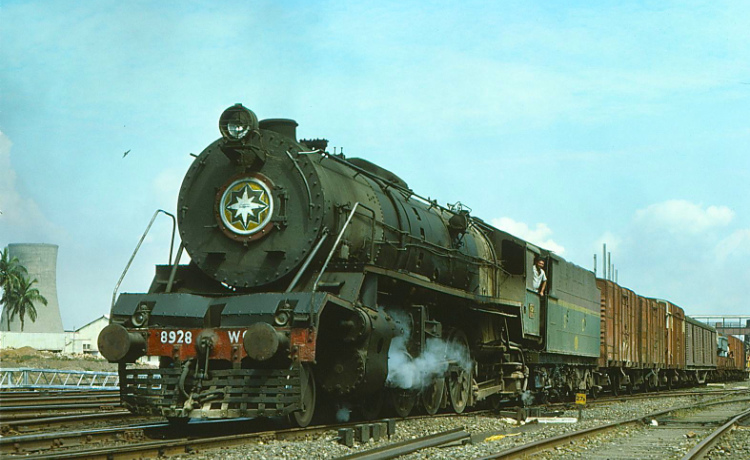
The WG may have the distinction of being the class of loco that was manufactured in the largest number of countries, as units were built in England, Scotland, Germany, Austria, USA, Japan, Switzerland, and of course in India.
Some WG locos were marked 'WGx'. This was not a separate class of loco, but simply indicated that the loco had CBC knuckle couplers for working block freight rakes, especially on SER.
There were two classes of BG 4-6-2 locomotives of the WL type. The first were 4 locomotives built by Vulcan Foundry in 1939 for the North Western Railway, and these went to Pakistan on partition.
However, the Indian WL 4-6-2 was a new class built in 1955. Initially, 10 locomotives were built by Vulcan Foundry. They were designed to operate passenger trains on lines denied to the WP class; and so are lighter and smaller. While the new standard express WP class weighed 102 tons, the WL weighed 89 tons, giving an axle load of 16¾ tons, against the WP's 18.5t. Five WLs were allocated to the Southern Railway, and five to the Northern Railway. Ten years later, production began at CLW, and WL 15014-15107 were built there in the years 1966-1968.
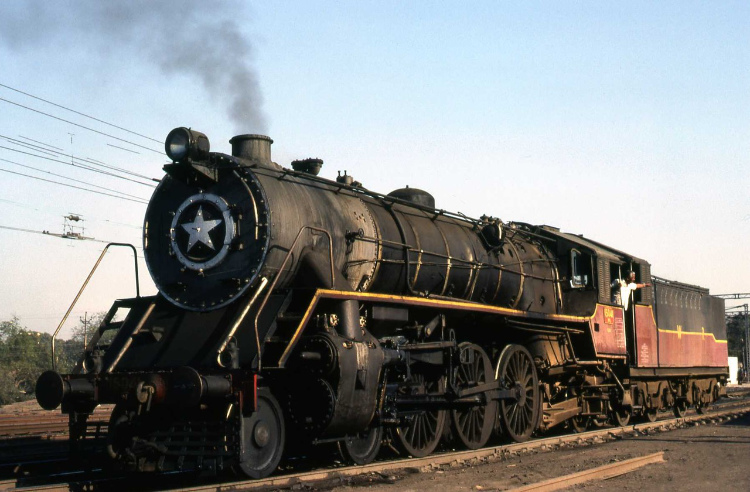
WL #15005 (VF, 1955) hauled the last regular BG steam service in November 1995. This loco was preserved for a number of years at the NRM. It is now completely revived and is at the Rewari Steam Shed.
The broad-gauge WT was a 2-8-4T tank loco built for the busy and heavy suburban trains around Calcutta, before those lines were electrified. It is a noteworthy design for two reasons. It was the first locomotive to be fully designed at CLW; and it is probably the world's last new design of main line steam locomotive to go into series production. Ten were built by CLW in 1959-1960; and a further 20 in 1965-1967 -- these went to the Madras area. The last WTs were operating in the Rajahmundry area in the early 1980s.
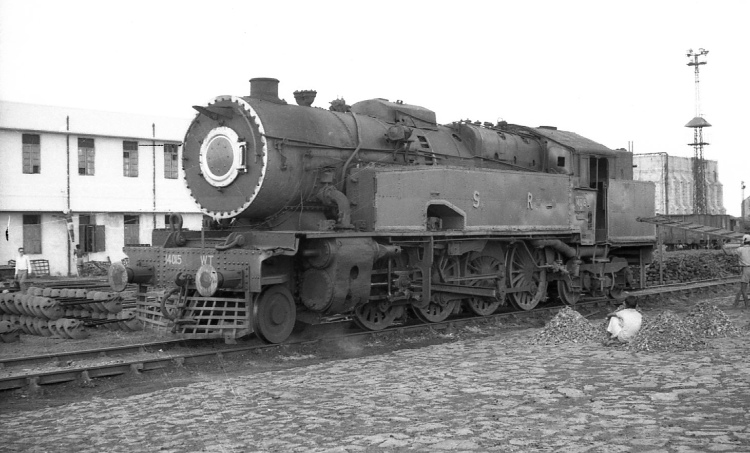
They were large and powerful tank locomotives: they had the boiler and grate area of the WL class, with the WP's larger cylinders. Total weight of the WT was 123t, with an axle load of 18t.
These 4-6-2 MG passenger locomotives were adapted Baldwins ordered for the Jodhpur network in 1948. 10.5 ton axle load. Tractive effort of about 18,400lb. In total 871 were built between 1952 and 1968, a majority by CLW and Telco.
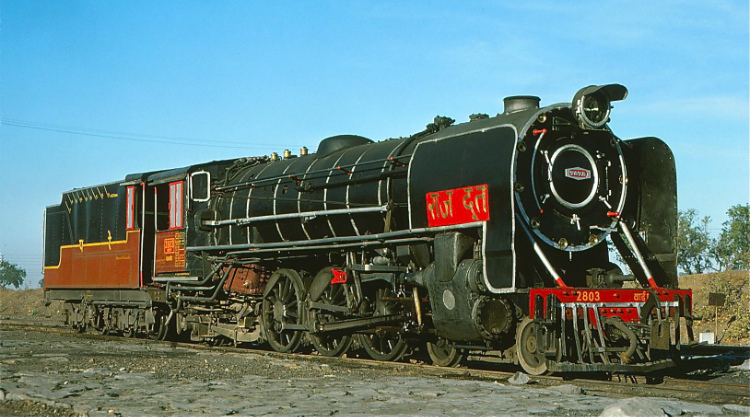
YP 2151 has been restored to running order at Rewari. There are many of this class plinthed outside various IR offices and facilities.
These 2-8-2 locos were MG freight workhorses. Initially imported from Germany, though some also came from Baldwin. Like YP's they also had a 10.5 ton axle load. Tractive effort of about 23,450. More than a 1000 units were built by CLW and Telco until 1972.
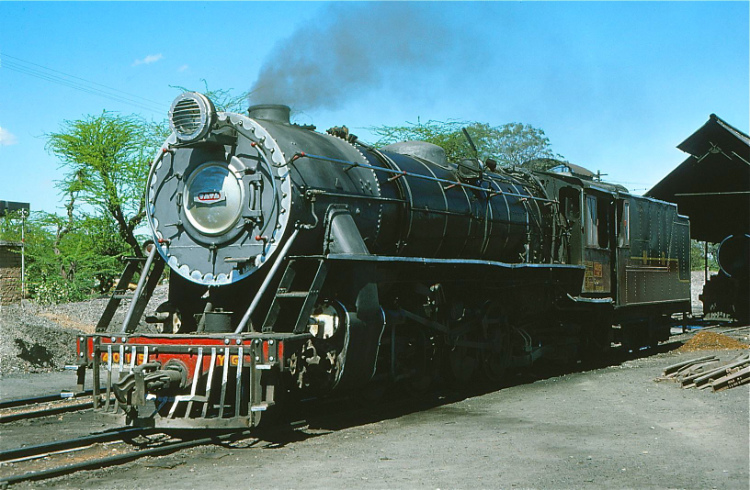
YG's 4252, 3415, 3438 and 3724 are at Rewari Steam Shed and steamed regularly. Many are also preserved at various large stations of IR.
These MG 0-8-2T's are rack and pinion compound locos used by the Nilgiri Mountain Railway. First batch of 12 were delivered between 1914 and 1925 by SLM. Second batch of 5 in 1952. These locos have two high-pressure and two low-pressure cylinders. The low-pressure ones drive the rack gears while the high-pressure ones drive the main wheels.
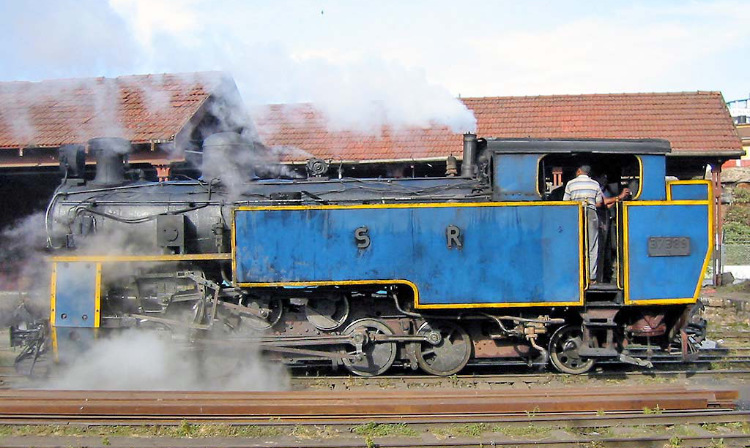
Since 2004, the Golden Rock Workshops have converted many to oil-fired and have manufactured new ones. #37384 is the only original coal-fired version from SLM left in service. In August 2021, the Workshops commissioned #37400, newly manufactured and coal-fired.
These 2' NG locos of the Darjeeling Himalayan Railway are saddle tank (0-4-0ST). Initially made by Sharp, Stewart & Co in 1899, more were made North British and Baldwin. Since 2004, Golden Rock Workshops have made a few oil-fired ones. Weight 14 tons, with 26" coupled wheels and 11"x14" cylinders. Tractive effort of 7,750lb.
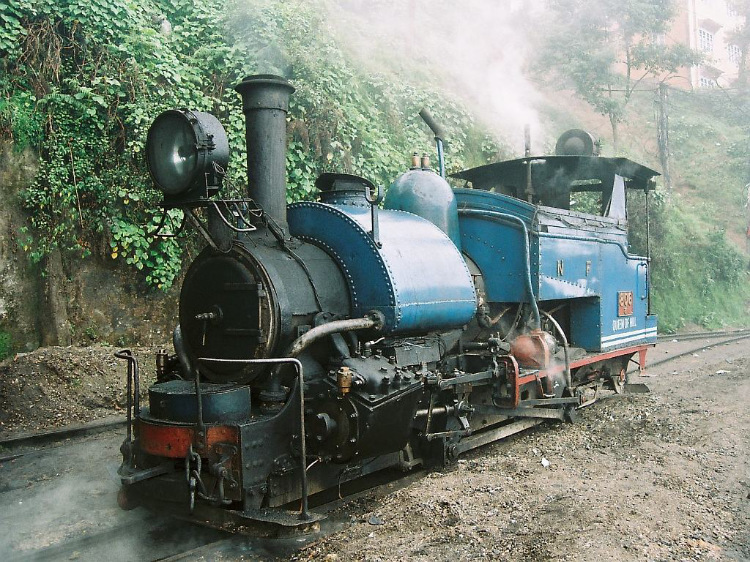
2-8-2 locos with bogie tenders built between 1926 and 1950 by Nasmyth Wilson, UK. Most were in service in CR.
2-6-2 NG loco (2'6") built for Gaekwar Baroda State Railway.
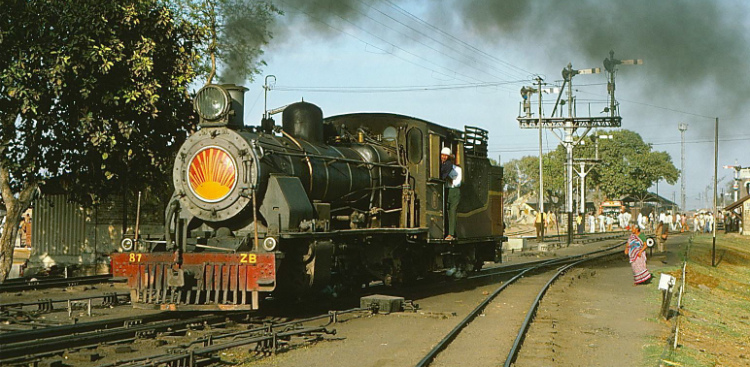
An NG (2'6") 4-6-2 loco with 6-wheel tender, some built by Nippon Sharyo, Japan, around 1955. Was in service primarily in CR and SER.
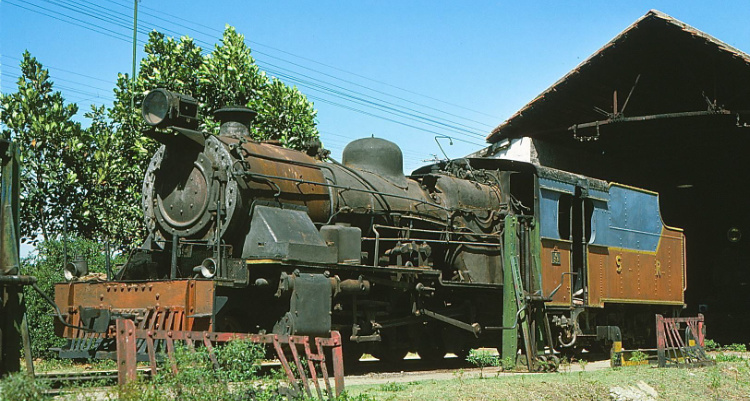
The original ZD class for 2'6" gauge was to be an IRS design of 4-6-2 (1925), based on the BNR Pacifics (class C, later CC or CS), with an axle load of 8 tons, and a loco weight of 41 tons. These were never built.
The ZD class as constructed was a modern 2-8-2 using a boiler based on the MG YL class (2-6-2) which had a pressure of 210lb. The 6 locos were built by Nippon Sharyo in 1957-58 to work trains on the two lines radiating north and south from Murtajapur. They had a 7 ton axle load.
An NG (2'6") 2-8-2 loco with 6-wheel tender, some built by Kawasaki Rolling Stock of Japan, in 1955; was in service in CR, SER. This ZE class is not the same as the IRS class ZE specified in 1925. Most were based in Nainpur by the late 1980s.
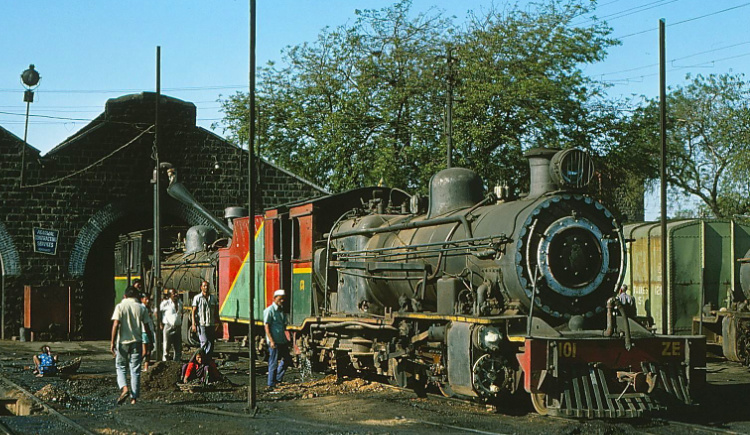
Miscellaneous
Boiler Numbers
In the days of steam, each steam boiler had an identifying number and its own schedule of maintenance. Boiler numbers were quoted in many ways, but a common format was something like '37/L/NG/1962'. In this, the 37 is the serial number, the L stands for a steam locomotive (although diesels and electrics don't have boilers, their equipment would use DL and EL instead), the NG refers to narrow gauge, and the 1962 refers to the year of manufacture.
Giesl Ejectors
Giesl ejectors, developed by the Austrian engineer Dr. Adolph Giesl-Gieslingen in the 1940s, consisted of a prefabricated nozzle and chimney with seven or more steam jets inline with the main nozzle and directed along it. The idea was to greatly improve the pumping efficiency of the exhaust within the loading gauge by using an oblong chimney (most of the length is below the boiler top line): depending on the original state of the loco, the Giesl ejector with superheater booster, produced notable fuel economies, and gains in available power.
IR ordered four Giesl ejectors in 1957: two were for WP locos, and two for AWE locos. The WP's were #3036 and #3037 (built by Wiener Lok, 1957); later WP's #7036 and #7037 were also fitted with Giesl ejectors. This was an unusual order -- in 1957, very few non-Austrian railways used Giesl ejectors. In 1964, 20 more ejectors were ordered, for WP/WG locos. In 1965 four more were ordered, two for WM locos and two for HPS locos. Finally, in 1966-67 85 were ordered for WG locos, and 45 for WP locos.
The first fully developed Giesl ejector went into operation on an Austrian express 4-8-0 in 1951, and over 2400 ejectors were built by 1966. They were widely used in the last years of steam: the East African Railways equipped most of their modern steam fleet with them.
The Bihta Accident
The Locomotive Standards Committee set up in 1924 to update the BESA locomotive designs proposed several new designs for locomotives to be used in India. Among these designs known as the Indian Railway Standard or IRS classes was a 17 ton 4-6-2 locomotive design known as the 'XB' class.
These locos as well as the lighter 12.5 ton 4-6-2 'XA' class locos were involved in a number of minor derailments right from the beginning. On 17 July 1937, an XB loco hauling a mail train derailed at Bihta at an estimated speed of 96.5km/h, and over a hundred people died as a result. This tragedy received wide publicity. Although heavy monsoon rains had a role to play in undermining the track structure at the site of the derailment, it was determined that the tragedy was really caused by poor damping of lateral oscillations of the locomotive and its tender, which had over time also dangerously damaged the tracks. The investigation committee set up to look into the accident recommended that a deeper study be done into the design of the locomotive and ways to prevent such disasters.
As a result, in 1938, the Pacific Locomotive Committee was appointed and in its report published in 1939 recommended several significant changes to the loco design, such as modifications to the front bogie spring controls to damp the lateral oscillations, hind truck slides, and improved drawgear to couple the engine to its tender. Emphasis was also given to running these locos, even with the modifications, under strict speed limits.
However, World War II resulted in these plans for modified locomotives never materializing, and no purchase orders were placed with British manufacturers for any new XB locomotives. British manufacturers were fully occupied supplying required wartime locomotives. Instead, as the war progressed, India started receiving large numbers of locomotives from the USA and Canada (e.g., the X-Dominion or CWD 2-8-2, the AWD, AWE, etc.), which established a whole new set of loco designs in India, with their cast frames, integrated cylinders, and many other features including robustness in operation, and eventually this spelled the end of the old IRS set of loco designs in India.
